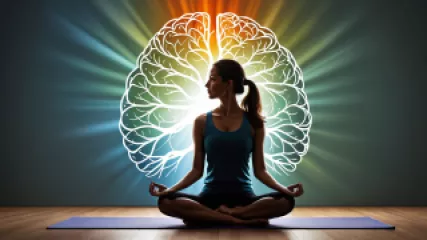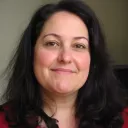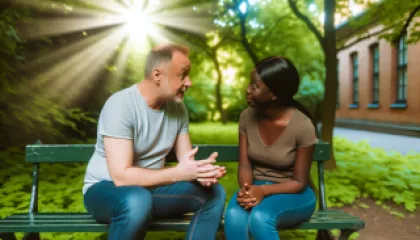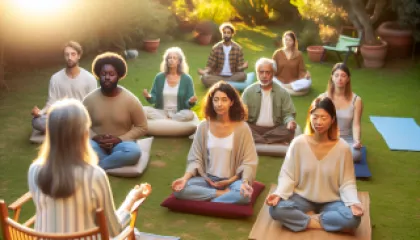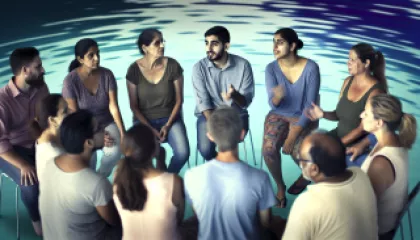Veterans Share Inspiring Mental Health Journey: An Interview Feature
Veterans Share Inspiring Mental Health Journey: An Interview Feature
Jody Anderson's Path to Wellness: Finding Strength Through Therapy
Jody Anderson, a former Army sergeant, faced a daunting challenge when she returned home from her deployment – the aftermath of the traumas she experienced during her service. Like many veterans, Jody struggled with the weight of her mental health struggles, unsure of where to turn for help. However, her journey to wellness took an inspiring turn when she decided to confront her demons head-on and embark on a transformative therapy journey.
"When I came back from my tour, I felt lost and disconnected," Jody recounts, her voice tinged with the memory of those difficult days. "The nightmares, the anxiety, the feelings of isolation – it was a lot to handle on my own. I knew I needed help, but the thought of opening up terrified me."
Jody's path to healing began when she finally mustered the courage to seek out a therapist who specialized in veterans' mental health. "It wasn't an easy decision, but I knew I had to do it for my own well-being," she says. "I was so nervous at first, but my therapist made me feel understood and validated. She listened without judgment and helped me find ways to process my experiences."
Uncovering the Root Causes
Through weekly therapy sessions, Jody began to unpack the layers of trauma and emotional baggage she had been carrying. "It wasn't easy, but my therapist gently guided me through it. We delved into the root causes of my anxiety, depression, and PTSD, exploring the events and feelings that had been weighing me down."
One of the most impactful aspects of Jody's therapy journey was the use of EMDR (Eye Movement Desensitization and Reprocessing) therapy. "EMDR was a game-changer for me," she explains. "It allowed me to confront my memories and emotions in a safe, structured way, helping me to reprocess them and diminish their hold on my psyche."
As Jody worked through her traumas, she began to notice a shift in her mindset and overall well-being. "The nightmares became less frequent, and I started to feel more grounded and in control of my thoughts and feelings. It was a slow process, but my therapist's unwavering support and the tools she provided me made all the difference."
Embracing a Holistic Approach
Jody's journey to wellness didn't stop at the therapy sessions. She also incorporated a range of holistic practices into her routine, including mindfulness meditation, yoga, and art therapy. "I found that these complementary therapies helped me connect with myself on a deeper level and further process my emotions in a healthy way."
Reflecting on her progress, Jody emphasizes the importance of a multifaceted approach to mental health care for veterans. "It's not just about talking through your problems; it's about finding ways to nourish your mind, body, and spirit. The combination of traditional therapy, EMDR, and holistic practices has been truly transformative for me."
A Message of Hope and Resilience
As Jody continues her journey of healing and self-discovery, she is passionate about sharing her story and encouraging other veterans to seek the help they need. "I know how daunting it can be to take that first step, but I'm living proof that it's worth it. With the right support and a willingness to do the work, veterans can reclaim their power and find a path to wellness."
Jody's resilience and dedication to her own mental health have inspired those around her, including fellow veterans who have struggled with similar challenges. "Hearing Jody's story has given me hope and the courage to start my own healing journey," says Maurice Clark, a former Marine who has also found solace in therapy. "It's so important for us to support one another and share our experiences, because we're not alone in this."
Sadie Cooper's Journey: Navigating the Complexities of PTSD
For Sadie Cooper, a former Navy officer, the road to mental wellness has been a winding and at times, daunting journey. Plagued by the lingering effects of post-traumatic stress disorder (PTSD) following her deployments, Sadie found herself grappling with a range of debilitating symptoms that threatened to consume her.
"The nightmares, the hypervigilance, the feeling of always being on edge – it was exhausting," Sadie recalls, her eyes reflecting the weight of her experiences. "I tried to push through it, to be the strong, resilient officer I had always been, but deep down, I knew I needed help."
Navigating the Complexities of PTSD
Sadie's journey to finding the right support system was not without its challenges. "I reached out to a few therapists, but I didn't feel a connection with them. I needed someone who truly understood the unique experiences of veterans and the complexities of PTSD."
It wasn't until Sadie connected with a therapist who specialized in trauma-informed care that she began to see a glimmer of hope. "This therapist listened to me, validated my struggles, and never made me feel like I was weak or broken. Together, we developed a comprehensive treatment plan that incorporated a range of modalities, from traditional talk therapy to EMDR and even neurofeedback."
The road to healing was not an easy one, but Sadie's determination and the unwavering support of her therapist kept her moving forward. "It was hard work, both emotionally and mentally, but I knew I had to do it for myself, for my family, and for the future I wanted to create."
Embracing a Holistic Approach
In addition to her weekly therapy sessions, Sadie also embraced a range of holistic practices to support her overall well-being. "I started incorporating mindfulness meditation, yoga, and even equine-assisted therapy into my routine. These activities helped me to regain a sense of calm and control in my life, and they complemented the work I was doing in therapy."
Sadie's journey has been a testament to the power of resilience and the transformative impact of a comprehensive, holistic approach to mental health care. "It's not just about treating the symptoms; it's about addressing the root causes and finding sustainable ways to manage the challenges of PTSD. And that's what I've been able to do with the help of my therapist and the support of my community."
Empowering Others Through Shared Experiences
As Sadie continues to navigate her own mental health journey, she has become a beacon of hope and inspiration for other veterans struggling with similar challenges. "Sharing my story has been such an important part of my healing process," she says. "I want other veterans to know that they're not alone, and that there are resources and support systems available to help them find their own path to wellness."
Natasha Rhodes, a fellow veteran who has been inspired by Sadie's journey, echoes the sentiment. "Hearing Sadie's story has given me the courage to seek out the help I need. It's so powerful to see someone who has been through similar experiences not only survive but thrive. It gives me hope that I can do the same."
As Sadie looks to the future, she is driven by a deep sense of purpose and a desire to continue supporting her fellow veterans. "This journey has been challenging, but it's also been incredibly rewarding. I've learned so much about myself, about resilience, and about the transformative power of mental health care. And I'm committed to using my experience to help others find their own way to wellness."
Maurice Clark's Transformation: From Darkness to Light
For Maurice Clark, a former Marine, the transition to civilian life after his deployment was anything but smooth. Haunted by the traumatic experiences he had endured, Maurice found himself spiraling into a dark abyss of depression, anxiety, and substance abuse.
"I felt like I was drowning, both physically and mentally," Maurice recounts, his voice heavy with the weight of his past. "The nightmares, the panic attacks, the constant feeling of being on edge – it was all-consuming. I knew I needed help, but I was too scared to reach out."
The Breaking Point
It wasn't until Maurice hit rock bottom that he finally mustered the courage to seek professional help. "I had reached a point where I couldn't keep going on like that. I was losing everything – my job, my relationships, my sense of self. I knew I had to do something, or I might not make it."
Maurice's first step toward healing was finding a therapist who specialized in veterans' mental health. "It was the hardest thing I've ever done, but I knew I had to try. I was so nervous and ashamed, but my therapist made me feel safe and understood."
Uncovering the Root Causes
Through weekly therapy sessions, Maurice began to unpack the layers of trauma and emotional turmoil he had been carrying. "We dug deep, exploring the events and experiences that had shaped my mental health struggles. It wasn't easy, but my therapist guided me through it with empathy and patience."
One of the key breakthroughs in Maurice's journey was the use of EMDR therapy. "EMDR was a game-changer for me," he explains. "It allowed me to confront my memories and emotions in a structured way, helping me to reprocess them and diminish their hold on my psyche."
As Maurice worked through his traumas, he began to notice a shift in his mindset and overall well-being. "The nightmares became less frequent, and I started to feel more grounded and in control of my thoughts and feelings. It was a slow process, but my therapist's unwavering support and the tools she provided me made all the difference."
Embracing a Holistic Approach
In addition to his therapy sessions, Maurice also incorporated a range of holistic practices into his routine, including mindfulness meditation, yoga, and art therapy. "I found that these complementary therapies helped me connect with myself on a deeper level and further process my emotions in a healthy way."
Reflecting on his progress, Maurice emphasizes the importance of a multifaceted approach to mental health care for veterans. "It's not just about talking through your problems; it's about finding ways to nourish your mind, body, and spirit. The combination of traditional therapy, EMDR, and holistic practices has been truly transformative for me."
Paying It Forward
As Maurice continues his journey of healing and self-discovery, he is passionate about sharing his story and encouraging other veterans to seek the help they need. "I know how daunting it can be to take that first step, but I'm living proof that it's worth it. With the right support and a willingness to do the work, veterans can reclaim their power and find a path to wellness."
Maurice's resilience and dedication to his own mental health have inspired those around him, including fellow veterans who have struggled with similar challenges. "Hearing Maurice's story has given me hope and the courage to start my own healing journey," says Natasha Rhodes, a former Army medic. "It's so important for us to support one another and share our experiences, because we're not alone in this."
As Maurice looks to the future, he is driven by a deep sense of purpose and a desire to continue supporting his fellow veterans. "This journey has been challenging, but it's also been incredibly rewarding. I've learned so much about myself, about resilience, and about the transformative power of mental health care. And I'm committed to using my experience to help others find their own way to wellness."
Natasha Rhodes' Empowering Journey: From Healing to Helping Others
For Natasha Rhodes, a former Army medic, the transition to civilian life was fraught with unexpected challenges. Haunted by the trauma she had witnessed during her deployments, Natasha found herself grappling with a range of mental health issues that threatened to consume her.
"I had seen so much suffering and loss during my time in the service," Natasha recalls, her eyes reflecting the weight of her experiences. "The images, the sounds, the emotions – they were constantly with me, even long after I had returned home. I felt trapped, powerless, and utterly alone."
Navigating the Road to Healing
Natasha's journey to finding the right support system was not an easy one. "I tried a few different therapists, but I never felt like they truly understood what I was going through. I needed someone who could relate to the unique experiences of veterans and the complexities of PTSD."
It wasn't until Natasha connected with a therapist who specialized in trauma-informed care that she began to see a glimmer of hope. "This therapist listened to me, validated my struggles, and never made me feel like I was weak or broken. Together, we developed a comprehensive treatment plan that incorporated a range of modalities, from traditional talk therapy to EMDR and even somatic therapy."
The road to healing was not without its challenges, but Natasha's determination and the unwavering support of her therapist kept her moving forward. "It was hard work, both emotionally and mentally, but I knew I had to do it for myself, for my family, and for the future I wanted to create."
Embracing Holistic Practices
In addition to her weekly therapy sessions, Natasha also embraced a range of holistic practices to support her overall well-being. "I started incorporating mindfulness meditation, yoga, and even equine-assisted therapy into my routine. These activities helped me to regain a sense of calm and control in my life, and they complemented the work I was doing in therapy."
Natasha's journey has been a testament to the power of resilience and the transformative impact of a comprehensive, holistic approach to mental health care. "It's not just about treating the symptoms; it's about addressing the root causes and finding sustainable ways to manage the challenges of PTSD. And that's what I've been able to do with the help of my therapist and the support of my community."
Empowering Others Through Shared Experiences
As Natasha continues to navigate her own mental health journey, she has become a beacon of hope and inspiration for other veterans struggling with similar challenges. "Sharing my story has been such an important part of my healing process," she says. "I want other veterans to know that they're not alone, and that there are resources and support systems available to help them find their own path to wellness."
Jody Anderson, a fellow veteran who has been inspired by Natasha's journey, echoes the sentiment. "Hearing Natasha's story has given me the courage to seek out the help I need. It's so powerful to see someone who has been through similar experiences not only survive but thrive. It gives me hope that I can do the same."
As Natasha looks to the future, she is driven by a deep sense of purpose and a desire to continue supporting her fellow veterans. "This journey has been challenging, but it's also been incredibly rewarding. I've learned so much about myself, about resilience, and about the transformative power of mental health care. And I'm committed to using my experience to help others find their own way to wellness."
Conclusion: A Community of Resilience and Hope
The stories of Jody, Sadie, Maurice, and Natasha – four veterans who have each faced their own unique mental health challenges – serve as a testament to the power of resilience, the transformative impact of comprehensive mental health care, and the importance of supporting one another on the journey to wellness.
Through their individual experiences, these veterans have not only found their own path to healing but have also become beacons of hope and inspiration for their fellow service members. By sharing their stories, they have opened the door for others to seek the help they need and to know that they are not alone in their struggles.
As the veterans' community continues to navigate the complexities of mental health, it is clear that a multifaceted approach – one that combines traditional therapy, evidence-based practices like EMDR, and holistic, mind-body interventions – is essential for promoting sustainable, long-term wellness. And with the support of specialized mental health professionals, veterans can reclaim their power, find their voice, and embark on a transformative journey of self-discovery and growth.
The journey to mental wellness is not an easy one, but the stories of Jody, Sadie, Maurice, and Natasha prove that it is a journey worth taking. By sharing their experiences and encouraging others to seek
